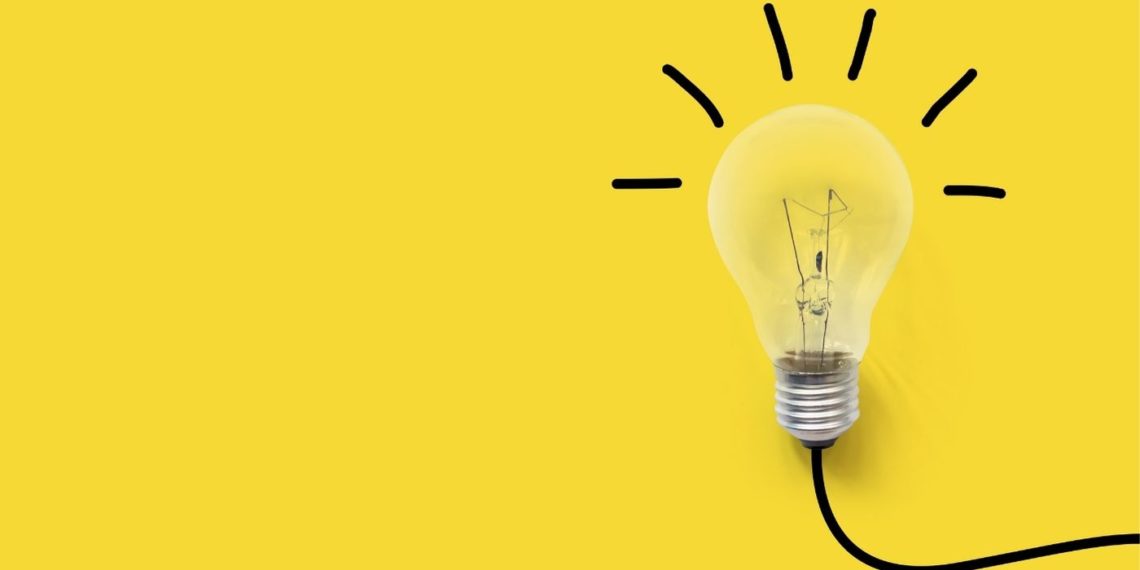Are you interested in the Design Thinking process but still hesitating about getting started? If you’re stuck between scepticism and enthusiasm, our article should help you sort things out. We’ll start with a definition to lay the foundations. Then, we’ll explain the 5 phases of Design Thinking. Advice from our expert Asako Nakano, Director of Design at WeDigitalGarden, will reassure you: by applying these best practices and being aware of the mistakes to avoid, you are putting the odds in your favour!
1. Our definition of Design Thinking
We all know and use the word “design”, yet we sometimes have trouble giving it a definition … A victim of its own success, the expression “Design Thinking” has fallen into the category of buzzwords and is used somewhat indiscriminately. In fact, some companies don’t even want to hear about it anymore…
So let’s put things straight and give it back its meaning… The word “design” is all about concepts. We could translate “Design Thinking” as a way of thinking about concepts.
At Wemanity, we like this definition of Design Thinking: for companies, it’s a different way of thinking employed to solve complex problems and arrive at an innovation.
2. Design Thinking: a 5-step process
Born in the 70s and 80s (without necessarily being named), the method was theorised and structured, and its practice spread. It was the IDEO agency (founded by David Kelley and Tim Brown in 1991) in particular that drove it. Its universal character (applicable to any type of organisation, project, product, service, or sector) has largely contributed to its worldwide dissemination.
According to the authors and designers, the number of steps varies, but it is above all the logic that must be retained from these methods, with an alternation of opening and closing postures.
Here, we only present the 5 phases of Design Thinking according to IDEO but don’t be surprised if you hear about the “double diamond” method, which has 4.
The 5 stages of Design Thinking
#1: Empathise
The “empathy” phase forces us to adopt a posture of openness. It involves putting yourself in the shoes of others to understand their problems and feel their emotions. To do this, the designer will go out and meet individuals. Not just any: they will have previously selected a sample of potential customers or future users of the product or service. The designer will observe them, interview them and gather their needs and expectations. The use of several complementary methods will confirm the observed facts and minimise the risks of subjective interpretations.
#2 : Define
The next, closed phase aims to summarise what was achieved in phase #1. The designer will narrow down the field to target and precisely define the problem to be solved. Wording should be succinct (a sentence or a question) while being understandable by everyone, including someone unfamiliar with the subject or even a child. The “problem” could be displayed on the wall, for example, to be clearly visible and to be able to refer to it as often as necessary.
#3: Ideate
Starting from the defined problem, we will try to open our minds and find the maximum number of ideas for solutions to respond to them. Collective intelligence works wonders at this stage of the process. The facilitator presents the topic to the participants In a workshop and leads the session with positive energy, encouraging creativity. This ensures that everyone can express themselves freely, bounce off the ideas of others, but that no censorship, judgment or criticism creeps in to limit the production of ideas.
This article, full of practical advice and tools for effective meetings, can help you prepare and facilitate your future workshops.
#4: Prototype
Following the ideation session, Asako recommends reworking the ideas put forward. She explains that to come out with something interesting, the Design team will have to go into, reformulate, and shape the material produced… They can then select the best idea before making it concrete by creating a prototype. It could be a plan, a model, a draft, a miniature construction, wireframes (for a digital product)… Anything that can make the concept more real… and, above all, testable! Contrary to what one might think, we can test at any granularity (value proposition, pitch, ergonomics, etc.). The goal is to accumulate more certainties as we move forward. Prototypes don’t need to be too elaborate at first.
#5: Test
We open up to others once again in the test phase. The prototype is handed over to user-testers to ensure that the solution actually meets their needs. As in the empathy stage, the designer observes, questions, collects data and collects feedback, learning the lessons necessary to return to stage #4 and improve the prototype. The designer tests the second version, and so on.
3. The 3 best practices you need to know before launching a Design Thinking process
1. Promoting the right state of mind
Design Thinking is, above all, a mindset. We can rely on tools and methodologies, but the result will not be up to expectations if we haven’t integrated the basic principles upstream.
If you want different solutions, you have to think differently. This is called divergent thinking. This encourages people to step past the boundaries, go beyond the frame, and think “outside the box”. In other words, to exceed the agreed limits.
It’s not always easy, especially in traditional businesses, to take a step aside and be willing to change perspective when routine has set in, but this is something you can practise. Our training centre offers training in the culture of innovation to help with this. External help can sometimes be useful in removing obstacles.
Find out more about our training center
2. Building a multidisciplinary team
We introduced the notion of openness earlier. If you embark on a Design Thinking process, the more you include people from a variety of backgrounds, the more you can hope for an abundance of ideas. Consider, for example, breaking down silos by bringing together employees from different departments in the company and seeking out customers, beneficiaries, partners or other stakeholders. Diversity among participants brings in different points of view.
Asako’s advice for choosing the right participants: similar hierarchical levels, willingness, openness and the ability to work together and co-create.
You can draw inspiration from leadership styles to instill the right team dynamics. This will stimulate creativity and create synergies between people.
3. Cultivating the soft skills a good designer possesses
If, as Asako presents it to us, Design Thinking is a mindset and Design Doing is actually a hard skill, soft skills are at least as important to cultivate.
When we look for the qualities of a good designer, we immediately think of creativity. But it is far from being the only one! These skills will also be very useful to you:
- the ability to listen and observe: essential for collecting comments, needs expressed and detecting problems;
- empathy: the ability to put yourself in someone else’s shoes and get an idea of what they are feeling;
- humility: adopting a posture of discovery, accepting you don’t know everything;
- objectivity: not letting yourself be influenced (too much) by your own beliefs and cognitive biases, but on the contrary, being as neutral as possible;
- optimism: being able to see opportunities and believing in your ideas;
- the capacity for abstraction: being able to imagine a solution that does not yet exist, at the conceptual stage;
- systemic vision: taking into account the complexity of a subject, the effects of networks, interdependencies.
Your range of soft skills is a valuable asset to promote. Maintaining the culture of learning and continuing education in your business can accelerate the success of the Design Thinking process.
4. The 3 mistakes to avoid when starting a Design Thinking project
1. Fear of failure
Whether in agility or in Design Thinking, the fear of failure is an obvious obstacle to the success of the process. Indeed, these two frameworks are based on empiricism, a philosophy according to which knowledge comes above all from experience. Failure is part of the learning process because we learn from our mistakes. That’s why we make prototypes.
In the Design Thinking process, the successive phases of prototyping and testing are essential. We also recommend that you don’t wait for your product to be perfect before confronting it with the reality on the ground: “If you’re not ashamed of the first version of your product, it’s because you launched it too late,” says Reid Hoffman, founder of LinkedIn.
It is the same idea behind the expression “fail fast”, which can be translated as “fail early to succeed faster”. Conversely, the later one fails, the more the failure is likely to be fatal.
2. Confusing Design Thinking and Brainstorming
Brainstorming is one of the techniques (certainly the best known) for generating ideas. However, there are others: mind mapping, brainwriting, focus groups, Bono hats, etc. It is even a good idea to vary the techniques from one workshop to another, which helps you explore new ways of thinking.
It would be a mistake to take a shortcut and settle for a post-it session in the hope of finding a great idea without having taken the necessary time beforehand to fully understand the needs and the problem. Consequence: the risk of being irrelevant or missing users real expectations.
Asako draws our attention to the important preparation and anticipation work required for the practice of Design Thinking. At each step, ask the right questions, keep the objective in mind, think carefully about the methods and tools best suited to the situation, and prepare the workshops carefully with the right inputs…
3. Abandoning the Design Thinking process because we haven’t found the idea of the century
Let’s face it, it’s unlikely that you will find THE innovative, revolutionary and profitable product the first time. You will probably have to go through these different stages of maturation before seeing the results:
- finding a sponsor who supports you and convinced participants,
- practising divergent thinking on a pilot project,
- daring to experiment,
- taking ownership of the process,
- disseminating it within the company,
- starting again and consolidating the experience …
It takes time but will pay off sooner or later, perhaps when you least expect it. It would be a shame to give up too early. As shown in a previous article on our blog, the organisations of tomorrow have every interest in encouraging creativity, continuous improvement and taking initiatives to unleash their full potential and innovate.
As you can see, Design Thinking is within the reach of any company, provided it has the right mindset, understands and respects the logic of the method and makes allowances for beginners frequent mistakes.
At Wemanity, our UX Design and Delivery Studio offer aims to place both the user and business value at the centre of the process.
By relying on 3 pillars:
- being human-centred,
- working in co-creation with our client,
- according to the principles of agility,
We can support you every step of the way in implementing a Design Thinking process within your teams.












